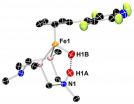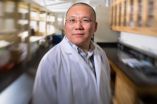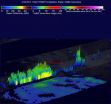(Press-News.org) CAMBRIDGE, Mass. (April 23, 2014) – Despite a well-documented history of dramatic genetic decay, the human Y chromosome has over the course of millions of years of evolution managed to preserve a small set of genes that has ensured not only its own survival but also the survival of men. Moreover, the vast majority of these tenacious genes appear to have little if any role in sex determination or sperm production.
Taken together, these remarkable findings—published this week in the journal Nature—suggest that because these Y-linked genes are active across the body, they may actually be contributing to differences in disease susceptibility and severity observed between men and women.
"This paper tells us that not only is the Y chromosome here to stay, but that we need to take it seriously, and not just in the reproductive tract," says Whitehead Institute Director David Page, whose lab conducted the research with collaborators from Washington University in St. Louis and Baylor College of Medicine.
"There are approximately a dozen genes conserved on the Y that are expressed in cells and tissue types throughout the body," he continues. "These are genes involved in decoding and interpreting the entirety of the genome. How pervasive their effects are is a question we throw open to the field, and it's one we can no longer ignore."
Page believes this research will at last allow his lab to transition from proving the so-called rotting Y theorists wrong to a new era in Y chromosome biology. Over the past decade, Page, who is also a professor of biology at MIT and an investigator of the Howard Hughes Medical Institute, and his group have been debunking the thinly supported but wildly popular argument that because the Y chromosome had lost hundreds of its genes over roughly 300 million years of evolution, its ultimate extinction is inevitable.
The loss of genetic content on the Y is not in dispute. In fact, a recent study from Page's own lab showed that the human Y chromosome retains only 19 of the more than 600 genes it once shared with its ancestral autosomal partner, the X chromosome. However, by comparing the sequence of the human Y chromosome with that of the chimpanzee and the rhesus macaque, the lab discovered that the human Y has lost only one ancestral gene over the past 25 million years. Since then, the Y has been more than holding its own.
Having shown that the human, chimp, and rhesus Y chromosomes share nearly identical ancestral gene content, the lab set out in this latest work to map the evolution of the Y chromosomes of five more distantly-related mammals: the marmoset, mouse, rat, bull, and opossum. A comparison of the ancestral portions of these Y chromosomes revealed a set of broadly expressed genes across all eight species. Such genetic stability and conservation is no accident.
This is not just a random sampling of the Y's ancestral repertoire," says Page, noting that each of the conserved genes discovered has a counterpart on the X chromosome. "This is an elite bunch of genes."
"Evolution is telling us these genes are really important for survival," adds Winston Bellott, a research scientist in the Page lab and lead author of the Nature paper. "They've been selected and purified over time."
Bellott and Page say the next phase of their research is to determine what this set of Y genes is actually doing, as they concede that's simply not yet clear. What is clear, they argue, is that cells in females (which, having two X chromosomes, are referred to as XX cells) are subtly but fundamentally different from cells that are XY in males. And, they are different throughout the body in tissues and organs that show no obvious anatomic differentiation.
"They're similar but biologically different," says Bellott. "Yet, we have cell biologists and biochemists actively studying cells without any idea whether the cells are XX or XY. This is so fundamental to biology and biomedicine, and yet no one's really paid much attention to it."
Both Page and Bellott say what's needed is a biochemical catalog of the differences between XX and XY cells, including variability in such processes as gene expression and protein production. Page believes this pursuit could have enormous implications for human health.
"There is a clear need to move beyond a unisex model of biomedical research," Page says, "which means we need to move beyond a unisex model of our understanding and treatment of disease."
INFORMATION:
This work was supported by the National Institutes of Health and the Howard Hughes Medical Institute.
Written by Matt Fearer
David Page's primary affiliation is with Whitehead Institute for Biomedical Research, where his laboratory is located and all his research is conducted. He is also a Howard Hughes Medical Institute investigator and a professor of biology at Massachusetts Institute of Technology.
Full Citation:
"Mammalian Y chromosomes retain widely expressed dosage-sensitive regulators"
Nature, April 24, 2014
Daniel W. Bellott (1), Jennifer F. Hughes (1), Helen Skaletsky (1), Laura G. Brown (1), Tatyana Pyntikova (1), Ting-Jan Cho (1), Natalia Koutseva (1), Sara Zaghlul (1), Tina Graves (2), Susie Rock (2), Colin Kremitzki (2), Robert S. Fulton (2), Shannon Dugan (3), Yan Ding (3), Donna Morton (3), Ziad Khan (3), Lora Lewis (3), Christian Buhay (3), Qiaoyan Wang (3), Jennifer Watt (3), Michael Holder (3), Sandy Lee (3), Lynne Nazareth (3), Steve Rozen (1), Donna M. Muzny (3), Wesley C. Warren (2), Richard A. Gibbs (3), Richard K. Wilson (2), & David C. Page (1)
1. Whitehead Institute, Howard Hughes Medical Institute, & Department of Biology, Massachusetts Institute of Technology, Cambridge, Massachusetts 02142, USA.
2. The Genome Institute, Washington University School of Medicine, St. Louis, Missouri 63108, USA.
3. Human Genome Sequencing Center, Baylor College of Medicine, Houston, Texas 77030, USA.
From liability to viability: Genes on the Y chromosome prove essential for male survival
2014-04-23
ELSE PRESS RELEASES FROM THIS DATE:
New target for prostate cancer resistant to anti-hormone therapies
2014-04-23
ANN ARBOR, Mich. — Prostate cancer becomes deadly when anti-hormone treatments stop working. Now a new study suggests a way to block the hormones at their entrance.
Researchers from the University of Michigan Comprehensive Cancer Center have found that a protein called BET bromodomain protein 4 binds to the hormone androgen receptor downstream of where current therapies work – targeting androgen receptor signaling.
This could mean that when prostate cancer becomes resistant to current treatments, it might remain sensitive to a drug that targets BET bromodomain proteins. ...
Quality control guidelines for genomics studies
2014-04-23
Sequencing an entire human genome is faster and cheaper than ever before, leading to an explosion of studies comparing the genomes of people with and without a given disease. Often clinicians and researchers studying genetic contributions to a certain disease encounter variations that appear to be responsible, only to find other people with the same mutation who don't have the disease or who are affected to a lesser degree.
How do doctors pinpoint the genetic changes that really cause disease? An open-access policy paper to be published Wednesday in Nature proposes guidelines ...
Picky male black widow spiders prefer well-fed virgins
2014-04-23
New University of Toronto Scarborough research shows that male black widow spiders prefer their female mates to be well-fed virgins – a rare example of mate preference by male spiders.
The study, authored by UTSC post-doc Emily MacLeod and Maydianne Andrade, a professor in UTSC's Department of Biological Sciences, found in both controlled field studies and the wild that males overwhelmingly chose to mate with well-fed, unmated females. They also found male black widows can tell whether a potential mate is well-fed and unmated by pheromones released by females.
"This ...
Halving hydrogen
2014-04-23
RICHLAND, Wash. -- Like a hungry diner ripping open a dinner roll, a fuel cell catalyst that converts hydrogen into electricity must tear open a hydrogen molecule. Now researchers have captured a view of such a catalyst holding onto the two halves of its hydrogen feast. The view confirms previous hypotheses and provides insight into how to make the catalyst work better for alternative energy uses.
This study is the first time scientists have shown precisely where the hydrogen halves end up in the structure of a molecular catalyst that breaks down hydrogen, the team reported ...
Increased infrastructure required for effective oil spill response in US Arctic
2014-04-23
WASHINGTON – A changing climate is increasing the accessibility of U.S. Arctic waters to commercial activities such as shipping, oil and gas development, and tourism, raising concern about the risk of oil spills. A new report from the National Research Council says that a full suite of proven oil response tools is needed to address potential oil spills in U.S. Arctic waters, but not all of them are readily available. While much is known about both oil behavior and response technologies in ice-covered environments, there are areas where additional research would enable ...
On the defensive
2014-04-23
People diagnosed with Huntington's disease, most in their mid-thirties and forties, face a devastating prognosis: complete mental, physical, and behavioral decline within two decades. "Mutant" protein clusters, long blamed for the progression of the genetic disease, have been the primary focus of therapies in development by pharmaceutical companies. But according to new research from Prof. Gerardo Lederkremer and Dr. Julia Leitman of Tel Aviv University's Department of Cell Research and Immunology, in collaboration with Prof. Ulrich Hartl of the Max Planck Institute for ...
ASTRO issues guideline on the role of postoperative radiation therapy for endometrial cancer
2014-04-23
Fairfax, Va., April 23, 2014— The American Society for Radiation Oncology (ASTRO) has issued a new guideline, "The Role of Postoperative Radiation Therapy for Endometrial Cancer: An ASTRO Evidence-Based Guideline," that details the use of adjuvant radiation therapy in the treatment of endometrial cancer. The guideline's executive summary is published in the May-June 2014 issue of Practical Radiation Oncology (PRO), the official clinical practice journal of ASTRO. The full-length guideline is available as an open-access article online at http://www.practicalradonc.org.
ASTRO's ...
Conservation priorities released for several protected areas along US-Mexico border
2014-04-23
This news release is available in French and Spanish.
Montreal, 23 April 2014—Today, the CEC released its Conservation Assessment for the Big Bend-Río Bravo Region: A Binational Collaborative Approach to Conservation, which identifies 29 priority conservation areas in a region straddling the United States-Mexico border that includes 11 different protected areas in the states of Texas, Coahuila, and Chihuahua. This region features unique, highly diverse arid and semi-arid habitats inhabited by rare and endangered plants and animals, and provides a vital migratory ...
Novel compound halts cocaine addiction and relapse behaviors
2014-04-23
BUFFALO, N.Y. – A novel compound that targets an important brain receptor has a dramatic effect against a host of cocaine addiction behaviors, including relapse behavior, a University at Buffalo animal study has found.
The research provides strong evidence that this may be a novel lead compound for treating cocaine addiction, for which no effective medications exist.
The UB research was published as an online preview article in Neuropsychopharmacology last week.
In the study, the compound, RO5263397, severely blunted a broad range of cocaine addiction behaviors.
"This ...
NASA sees last vestiges of Tropical Depression Jack
2014-04-23
Tropical Cyclone Jack had weakened to a tropical depression when NASA and JAXA's Tropical Rainfall Measuring Mission (TRMM) satellite passed above on April 22, 2014 at 1120 UTC/7:20 a.m. EDT.
At that time, TRMM found that Jack was devoid of almost all rainfall near the tropical cyclone's center. Outside the center was a different story, however. That's where TRMM's precipitation radar instrument found rain falling at a rate of over 130mm/hr (about 5.1 inches) in a band of thunderstorms that stretched from east of Jack's center to the south. Some of the thunderstorms even ...





